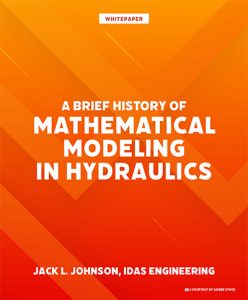Many fluid-power engineers take for granted today’s technically sophisticated devices like servovalves, high-efficiency pumps and electronic controls. But do you ever wonder the genesis and history behind such developments?
Jack L. Johnson, CEO and V.P. of R&D with IDAS Engineering, a U.S. delegate to ISO TC 131 (the ISO technical committee on fluid power) and retired Director of the Fluid Power Institute at MSOE University has recently written an engaging and enjoyable white paper, “A brief history of math modeling in hydraulics.”
He examines significant advances in electronics that have influenced the progression of hydraulics and, more specifically, the required simultaneous advancements in computer hardware and software; and how the progress dovetails with the development of hydraulic models from a more mathematical, or theoretical, point of view.
In the interest of brevity, the main focus is on energy conversion models for rotating machines, both pumps and motors, rather than on all components in a complete system. Pumps and motors are in the limelight because an international team is evaluating ISO 8426 (2008), the international standard dealing with the empirical determination of pump and motor displacement.
“We have no way to determine displacement directly,” said Johnson. “Mathematical modeling methods are the only means for converting empirical data to a displacement value.” With the proposed revisions to the derived capacity standard, fluid-power engineers now stand at a new threshold, aided and abetted by ever faster and more-powerful information processing, he emphasized. That includes exciting new technologies, including the hard-core modeling methods of digital twins, as well as the misnamed, but yet useful, artificial intelligence and machine learning. “And other new technologies are on the horizon with more to come. Ours is but a small part of this broader technological advancement, but nonetheless important in order to keep fluid power in general, and hydraulic engineering in particular, viable and competitive,” said Johnson.
Download the PDF below.
Filed Under: White Papers
